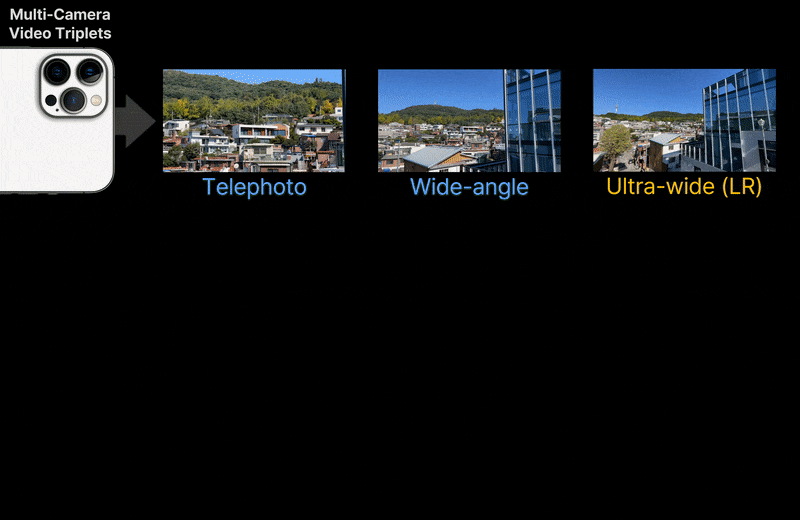Codeslake
Models by this creator

ifan-defocus-deblur

116
The ifan-defocus-deblur model is an AI-powered tool that removes defocus blur from images. It was developed by codeslake and is based on the research paper "Iterative Filter Adaptive Network for Single Image Defocus Deblurring" published at CVPR 2021. The model uses an iterative filter adaptive network (IFAN) to effectively remove defocus blur from a single input image. Similar models include background_remover, which removes the background from an image, and lednet, which performs joint low-light enhancement and deblurring. However, the ifan-defocus-deblur model is specifically focused on removing defocus blur, making it a more specialized tool for this task. Model inputs and outputs The ifan-defocus-deblur model takes a single input image, which can be in either PNG or JPG format. The model then outputs a deblurred version of the input image. Inputs Image**: The input image to be deblurred, which must be in PNG or JPG format. Outputs Deblurred image**: The output image with the defocus blur removed. Capabilities The ifan-defocus-deblur model is highly effective at removing defocus blur from images. It can handle a variety of blur types and scenes, producing sharp, clear results. The model utilizes an iterative filter adaptive network to adaptively process the input image and remove the blur, resulting in impressive deblurring performance. What can I use it for? The ifan-defocus-deblur model can be a valuable tool for photographers, videographers, and imaging professionals who need to fix blurry images caused by defocus. It can be particularly useful for portraits, landscape, and macro photography, where defocus blur is a common issue. By using this model, users can quickly and easily restore sharpness and clarity to their images, improving the overall quality and visual impact. Additionally, the model could be integrated into various imaging workflows, such as photo editing software or online image processing services, to provide automated defocus deblurring capabilities to a wide range of users. Things to try One interesting aspect of the ifan-defocus-deblur model is its ability to handle a variety of blur types, including both uniform and non-uniform defocus blur. This makes it a versatile tool that can be applied to a wide range of blurry images, from portraits with shallow depth of field to landscape shots with uneven focus. Users could experiment with the model by trying it on a diverse set of images, from close-up macro shots to wide-angle landscape photos, to see how it performs in different scenarios. Additionally, comparing the results of the ifan-defocus-deblur model to other deblurring techniques could provide valuable insights into its strengths and limitations.
Updated 9/20/2024

refvsr-cvpr2022

14
refvsr-cvpr2022 is a reference-based video super-resolution model developed by codeslake and presented at CVPR 2022. It improves on existing video super-resolution approaches by using a reference wide-angle video frame to super-resolve an ultra-wide low-resolution video frame. This is useful for scenarios where a wide-angle and ultra-wide camera are available, like in action cameras or smartphones. Similar models include lcm-video2video, which uses a latent consistency model for fast video-to-video translation, and arbsr, which can perform scale-arbitrary super-resolution. Model inputs and outputs refvsr-cvpr2022 takes two inputs: a low-resolution ultra-wide video frame (LR) and a reference wide-angle video frame (Ref). It outputs the super-resolved ultra-wide video frame (SR_output), using the reference frame to guide the super-resolution process. Inputs LR**: Low-resolution ultra-wide video frame to super-resolve Ref**: Reference wide-angle video frame Outputs SR_output**: Super-resolved ultra-wide video frame Capabilities refvsr-cvpr2022 can perform high-quality 4x video super-resolution, significantly improving the resolution of ultra-wide video frames by leveraging a wide-angle reference frame. This enables applications like high-resolution action cameras or smartphone videos without the need for expensive ultra-wide sensors. What can I use it for? The refvsr-cvpr2022 model can be used to enhance the quality of ultra-wide video footage, such as from action cameras or smartphones, by super-resolving the frames using a reference wide-angle video. This can be useful for content creators, video production companies, or anyone looking to improve the resolution of their ultra-wide video without expensive hardware upgrades. Things to try One interesting thing to try with refvsr-cvpr2022 is exploring the impact of the reference frame quality and field of view on the super-resolution performance. The model's ability to leverage the reference frame is a key aspect, so experimenting with different reference video conditions could yield insights into the model's capabilities and limitations.
Updated 9/20/2024